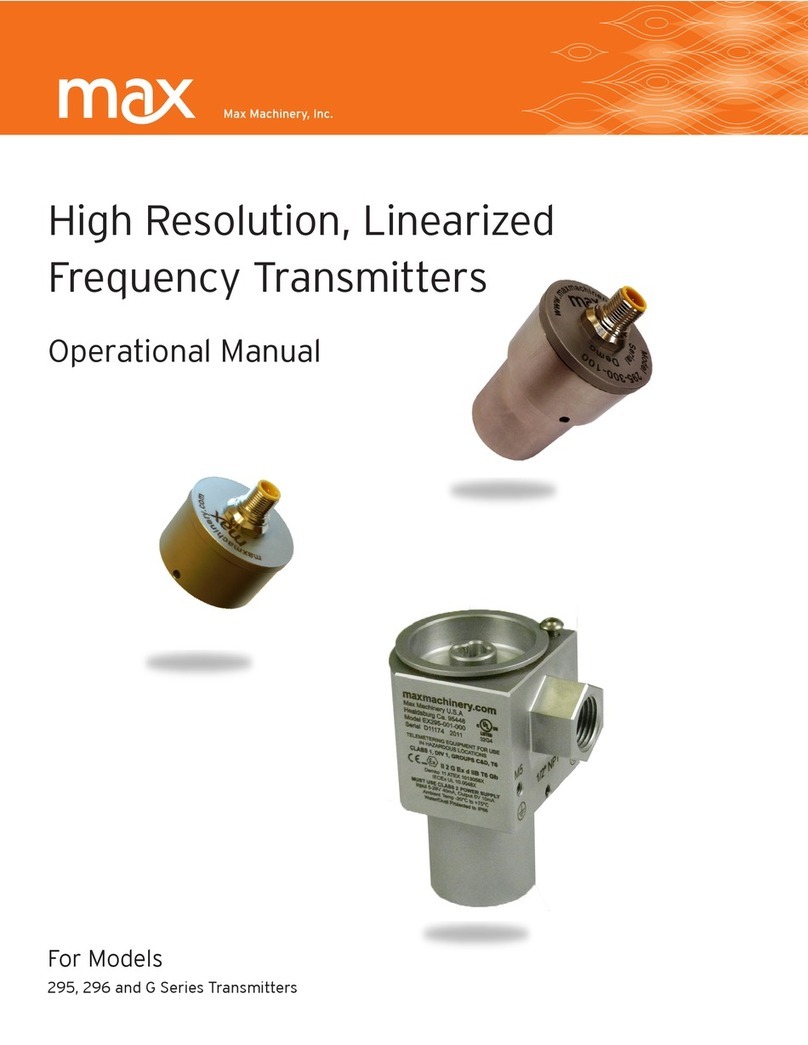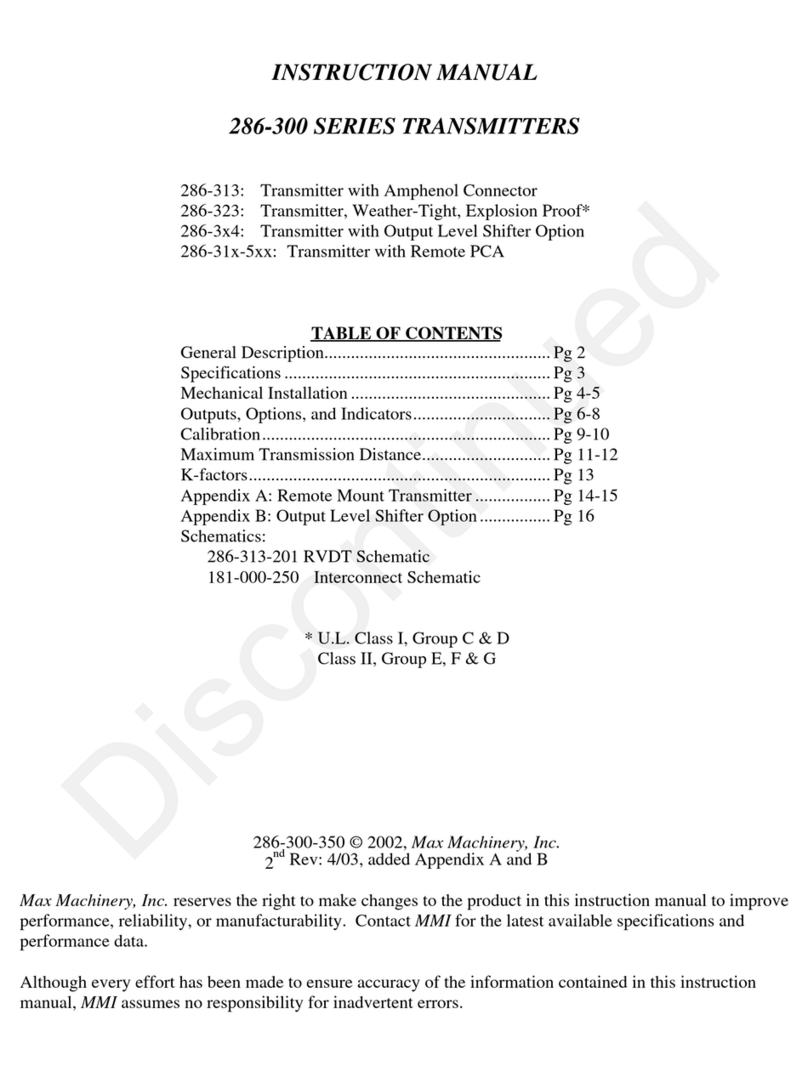276-515-350 © 2006 Max Machinery, Inc. ( 5 )
INSTALLATION
—Moisture Protection & Temperature Considerations
Moisture Protection: The weather-tight version of the Transmitter has it’s electronic circuitry
enclosed in a liquid and vapor tight enclosure. All joints are sealed by welding or by “O”-rings.
If this sealed condition is to be maintained, the conduit connection to the enclosure should be
made liquid and vapor tight by using pipe dope or a potting fitting. If a Transmitter is located
outside and this precaution is not taken, moisture may form inside the housing. This will cause
the circuitry to give an inaccurate output or possibly no output at all. In the long run it will
cause corrosion and failure. The amphenol connector 276 Transmitter models offer moderate
protection from moisture and dust, but are not totally sealed.
Temperature Considerations: High ambient temperatures (120°F/50°C) should be avoided if
possible. It is a good idea to locate the Transmitter away from hot spots such as steam pipes,
ovens and heaters. The electronics of the 276 Series Transmitters are rated for operation up to
65°C or 150°F. Because some
heat travels from the
Flowmeter to the Transmitter
electrical enclosure, the
temperature of the electronics
within is a function of both the
Ambient and the Flowmeter
temperature. The figure [top,
right] shows the relationship
between the maximum ambient
Transmitter temperature and the
fluid temperature through the
Flowmeter.
The stator of the 276
Transmitters is insulated with an
epoxy that is rated to 130°C.
This limits the maximum
Flowmeter fluid temperature to
about 130°C.
The output of the 276
Transmitter will be affected by
changes in the temperature of
the Flowmeter. This is because
the magnet that generates the
voltage in the stator is affected
slightly by temperature. The
figure [bottom, right] shows
typical percentages of error.






























